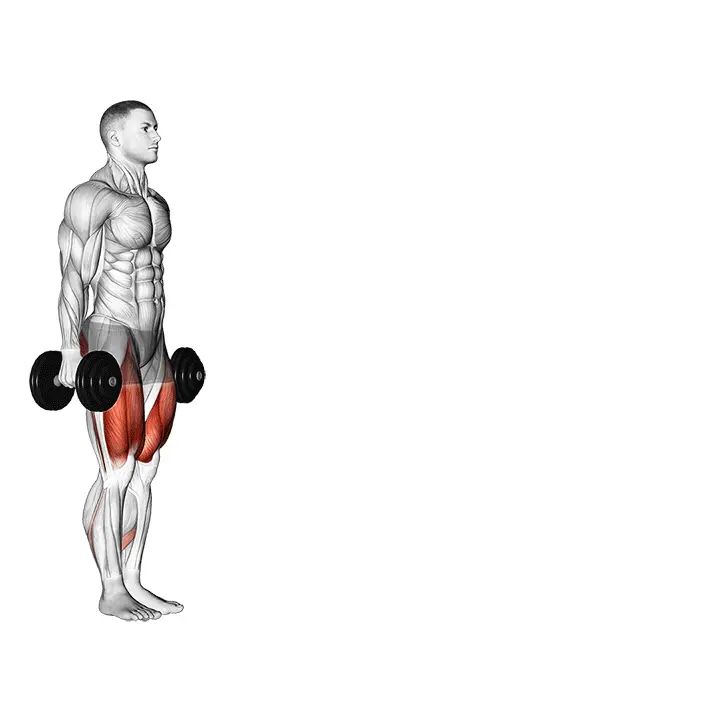Barbell Split Squat

Muscles Involved
The barbell split squat primarily targets the quadriceps, hamstrings, and glutes, making it an excellent exercise for lower body strength development. The primary muscles involved are:
- Quadriceps: These muscles at the front of the thigh are heavily engaged as you push up from the squat position.
- Hamstrings: Located at the back of the thigh, they assist in stabilizing the movement.
- Glutes: The gluteal muscles are activated to help propel you upward from the split squat position.
Secondary muscles worked include the calves for stability and the core for maintaining proper posture throughout the exercise. This makes the barbell split squat an excellent compound movement for lower body strength and balance.
Top Mistakes
- Allowing the front knee to travel too far over the toes, which can strain the joint.
- Having an upright torso rather than maintaining a slight forward lean, reducing effectiveness and stability.
- Using a weight that is too heavy, leading to poor form and potential injury.
- Failing to engage the core, which can result in a lack of balance and control.
Execution Tips
- Start with your feet shoulder-width apart and hold the barbell across your upper back, ensuring that it's positioned comfortably and securely.
- Step back with one foot into a staggered stance, keeping the back leg slightly bent.
- As you lower into the squat, keep your front knee aligned over your ankle and ensure that your hips descend straight down. Aim for a 90-degree angle in your front leg.
- Keep your torso upright while maintaining slight forward lean to engage the core effectively.
- Drive through the heel of your front foot as you return to the starting position, focusing on pushing from the glutes and quadriceps.
Workouts
Incorporating the barbell split squat into your workout routine can enhance lower body strength and stability. Aim for 3 to 4 sets of 8 to 12 repetitions on each leg. You can integrate this exercise into various routines, such as:
- Lower body days: Pair it with exercises like deadlifts or leg presses.
- Full-body workouts: Integrate with compound lifts like bench presses or overhead presses to enhance overall strength.
- Leg day supersets: Alternate between split squats and lunges to maximize muscle engagement.
Conclusion
In summary, the barbell split squat offers a multitude of benefits, including improved lower body strength, balance, and coordination. It targets essential muscle groups effectively while also promoting core stability. By avoiding common mistakes and adhering to proper execution tips, you can successfully incorporate this powerful exercise into your fitness routine, ultimately boosting your performance and physique.



